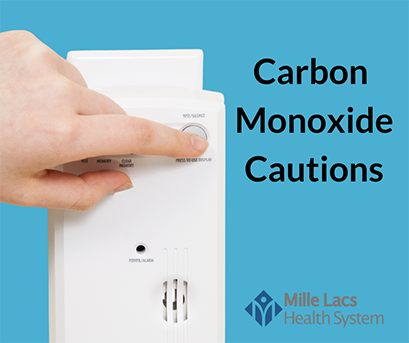Carbon Monoxide Cautions
January 15, 2024
With colder temperatures rolling in, the U.S. Consumer Product Safety Commission (CPSC) is urging consumers to protect themselves against carbon monoxide poisoning. The winter months are the most common months for carbon monoxide poisoning to occur.
Carbon monoxide (CO) is a gas that comes from burning common sources of carbon such as natural gas, paper, coal, or cloth. Sources of carbon monoxide in homes include: clothes dryers, water heaters, furnaces or boilers, fireplaces (both gas and wood), gas stoves/ovens, generators, and car exhaust.
Carbon monoxide is called the invisible killer because it is colorless and odorless. People suffering from carbon monoxide poisoning may experience: nausea, headache, dizziness or weakness, chest pain, confusion, and shortness of breath. One of the most dangerous times to be exposed to CO is while sleeping. Often times individuals become unconscious while sleeping and never wake up to experience the other symptoms, possibly leading to death.
The CDC estimates that every year approximately 425 people in the U.S. die from unintentional CO exposure. Additionally, more than 100,000 people visit the emergency room, and more than 14,000 are hospitalized.
To stay safe around your home, avoid these common causes of carbon monoxide poisoning.
Generators - When it comes to portable generators, never operate them inside a home, garage, basement, shed, or crawlspace. Opening windows or doors will not provide enough ventilation. Run the generator at least 20 feet away from the building, and direct the exhaust away from the building. When shopping for a generator look for one that advertises a CO shut-off safety feature. It is designed to shut the generator off automatically when high levels of CO are present around the generator.
Vehicles – do not “warm them up” and leave them running in your garage.
Grilling – do not use charcoal grills or portable camping stoves inside the garage or house. Also, do not use similar cooking devices inside campers, fish houses, or tents.
Vents - keep vents and flues free of debris. Be sure to regularly clean your fireplace flue and check for any obstructions. In the wintertime, remove snow away from vents on the outside of the house to allow for proper ventilation and to avoid dangerous buildup of gases.
Even when you take all the precautions listed above, things can happen. To add another line of defense against CO poisoning, make sure your home is equipped with CO detectors. For homes that do not already have CO detectors wired into the ceilings or walls, there are detectors that can be purchased and plugged right into a wall outlet. CO detectors should be installed on every level of the home and outside each bedroom. Don’t forget to regularly test your units and replace batteries if needed.
One last thing to consider is you might feel safe in your own home due to the precautions you’ve taken, but outside the home, hotels can pose new risks. Pool heaters account for half of the poisoning reports at hotels. Boiler systems are common for hotels to use for heating large public spaces, water for hotel rooms, and laundry services. Boiler units tend to be much larger than furnaces, therefore if anything goes wrong with the combustion or exhausting of a boiler, it can cause serious carbon monoxide poisoning. As far as room heating, most newer buildings have individual electric units per room, but some older facilities may still use fuel-burning space heater units.
Lastly, the Lake Mille Lacs community is one of many cabins and fish houses being used on a limited weekend type basis. Do not hesitate to use these same precautions even in your small weekend “cabins”. A plug-in or battery-operated CO detector is a must. A window cracked open is not enough ventilation.
